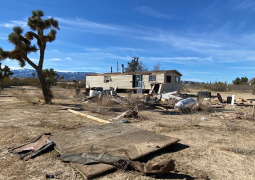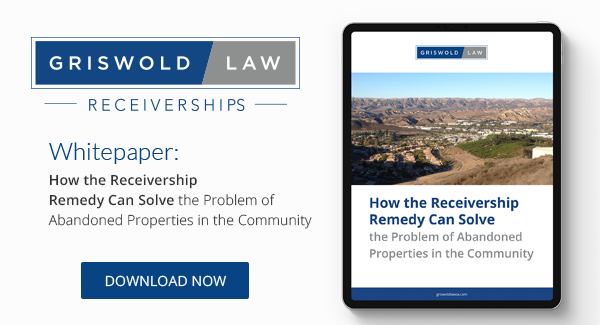When community members discuss neighborhood blight, they are referring to the visible signs of neglect and deterioration in an urban area. Signs of blight include abandoned and dilapidated buildings, vacant lots, trash and debris, and signs of vandalism.
Neighborhood blight affects everyone in the community, which is why local leaders often talk about how to fix it. A community’s well-being is strengthened when blight is eliminated, but there are many different approaches to addressing this problem.
We want to provide you with an overview of your options for neighborhood blight mitigation. But first, it is essential to understand the causes of blight in your area. You can’t address the problem without understanding why it is happening.
Causes of Neighborhood Blight
 It would be great if blight had one direct cause that could be easily remedied. Unfortunately, blight is usually caused by several complex factors, each of which can make the others worse.
It would be great if blight had one direct cause that could be easily remedied. Unfortunately, blight is usually caused by several complex factors, each of which can make the others worse.
When we work with the courts to address blighted properties, we see that a lot of issues combine to create this problem.
Some of these contributing factors include:
Abandoned properties: When homeowners or business owners abandon or “walk away” from their property, these buildings often fall into disrepair. Foreclosures and predatory lending practices play a part here, too, when homeowners are evicted from their homes but the bank does not sell or rent the property.
Neglected infrastructure: When roads, sidewalks, parks, buses, bridges, and other public infrastructure are not properly maintained, it creates an appearance of neglect and disrepair. Deteriorating infrastructure makes an area less accessible and appealing.
Economic decline: The loss of jobs and industry in an area reduces both the incomes and the investment capital needed to maintain a neighborhood. High unemployment leads to population loss when people have to move away to find a new job.
Suburbanization: Suburban sprawl and the movement of more affluent residents to the suburbs can lead to a city being drained of resources and a strong tax base. The remaining residents may lack the means to maintain their properties, creating signs of blight. This is also present in communities where there is a legacy of significant discriminatory housing practices, such as redlining and blockbusting. Communities that have been targeted for disinvestment struggle with blight for decades.
When you see that communities are affected by blight for so many different reasons, it becomes much more apparent why there is no “one size fits all” solution.
Impact of Blight on the Community
Just as many different factors contribute to blight, there are also many different impacts. Not all communities will suffer in the exact same way, but there are usually some commonalities among neighborhoods that are dealing with blight.
Some of the most common effects of blight that we see include:
- Lower property values
- Increased crime
- Health and safety hazards from deteriorating structures
- Higher maintenance costs for the city
- Loss of tax revenue
- Difficulty attracting businesses
- Displacement of residents
- Increased strain on public services
- Negative stigma and reputation
- Declining quality of life
- Impediments to economic growth and development
- Risk of intergenerational blight issues without intervention
Case Studies of Successful Neighborhood Blight Mitigation
What can be done about blight?
Some ideas include:
-
Public investment
-
Blight removal programs
-
Community-based policing
-
Neighborhood watches
-
Community cleanups
-
Youth intervention
-
Affordable housing
-
Job training programs
-
State and federal grants
At Griswold Law, we are proud to have been involved in blight resolution in many of California’s towns and cities.
Richardson “Red” Griswold has been appointed more than 180 times to serve as a court-appointed receiver in California. Often, this is in the role of a Health & Safety Receiver.
A Health & Safety Receiver is a court-appointed neutral who takes control of a dangerous property to resolve the safety concerns that it poses to its inhabitants and the broader community. We do this work because it is an important way to make California’s neighborhoods safer.
You can read about some of these specific instances in our case studies.
These are some of the highlights:
Garden Grove: Red Griswold was appointed by the Orange County Superior Court as receiver over a run-down, vacant single-family home in Garden Grove, California after years of increasing code violations and lack of maintenance by the absentee property owner. Our team worked with the City to rehabilitate the property by securing it, fixing plumbing and windows, and removing trash and debris. After failed attempts to contact the owner, Mr. Griswold requested authorization to sell the property, improving the neighborhood for residents grateful for the resolution of this blighted house.
Redding: An older 59-unit motel in downtown Redding, California had fallen into disrepair after years of neglect and mismanagement. Hundreds of code violations from the city led to the court appointment of Red Griswold as the receiver. Mr. Griswold initially kept the motel operating but eventually had to shut it down as the scope and cost of rehabilitation exceeded the receivership budget. Long-term occupants were relocated before Mr. Griswold listed the property for sale, and ultimately selling the motel to a private buyer for redevelopment of the site.
El Centro: An 8-unit apartment building in El Centro, California had been completely abandoned and vandalized, with wiring, appliances, and copper stripped out. The property had become a haven for squatters and drug activity. Mr. Griswold was appointed as a receiver, and he secured nearly $400,000 in outside funding to rehabilitate the apartment building, including hiring on-site security during the receivership due to the property's condition. After completing renovations, Mr. Griswold sold the property to an investor who could provide quality local housing. The sale enabled the costs spent on rehabilitation to be recouped.
Contact Griswold Law to Learn How We Can Help Address Blighted Properties in Your Neighborhood
Community members and their legal representatives can reach out to us to learn more about how a court-appointed Health & Safety Receiver may be the best strategy for addressing blighted properties in your community.
Contact Griswold Law today with your questions and concerns about neighborhood blight. And don’t forget to download our whitepaper about the receivership remedy!


